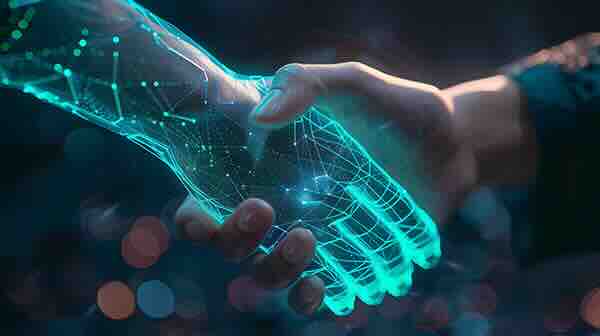In a world increasingly driven by artificial intelligence, it’s easy to worry that human creativity might take a back seat. However, AI doesn’t have to replace creativity; it can enhance it. The key is knowing how to use AI as a tool to inspire innovation rather than allowing it to overshadow human skills. Here’s how teachers and educational leaders can strike that balance.
1. Unlock Creativity by Questioning AI’s ‘Perfect’ Solutions
AI is excellent at providing answers, but it’s not infallible. Encourage students to approach AI-generated solutions with a critical eye. Rather than accepting them at face value, have students question these solutions. This process of challenging AI outputs can lead to deeper creative thinking. By evaluating the limitations and biases in AI, students can find innovative ways to improve upon the suggestions, fostering a mindset that values creativity over convenience.
2. Boost Innovation by Merging AI with Human Intuition
AI can handle data analysis and pattern recognition, but it lacks the intuition that comes naturally to humans. By combining AI’s strengths with human intuition, students can achieve more innovative outcomes. For instance, while AI might suggest a straightforward solution to a problem, human intuition can identify unique angles or unconventional methods that AI might overlook. This blend of AI’s precision with human creativity can lead to groundbreaking ideas that neither could achieve alone.
3. Teach Empathy Using AI Tools in Surprising New Ways
Empathy is a crucial human skill that AI cannot replicate. However, AI tools can be used creatively to teach empathy. For example, AI-driven simulations can immerse students in different perspectives, helping them understand and empathize with others. Role-playing scenarios enhanced by AI can make these experiences more vivid and impactful, fostering a deeper emotional connection. By using AI in this way, educators can reinforce the importance of empathy while leveraging technology to create meaningful learning experiences.
4. Hands-On Projects: The Secret to Out-Creating AI
While AI can assist in many areas, there’s no substitute for hands-on learning. Engaging students in projects that require manual skills, creativity, and problem-solving helps them develop abilities that AI can’t replicate. Encourage students to use AI as a tool within these projects, but ensure the focus remains on human ingenuity. Whether it’s building models, creating artwork, or developing prototypes, hands-on projects allow students to apply their creativity in tangible ways that go beyond what AI can offer.
5. Use AI to Inspire, Not Replace, Human Ingenuity
AI should be seen as a source of inspiration, not a replacement for human creativity. Encourage students to use AI tools to brainstorm ideas, explore new possibilities, and push the boundaries of their creativity. However, make it clear that the final creative decisions should always come from them. This approach ensures that students remain at the center of the creative process, using AI to enhance their ideas rather than allowing it to dictate their creative output.
By adopting these strategies, educators can foster an environment where AI and human skills complement each other. This not only enhances creativity but also prepares students for a future where technology and human ingenuity must coexist. The challenge is not to resist AI but to harness its power in ways that amplify, rather than diminish, the unique strengths of human creativity.
